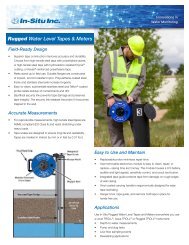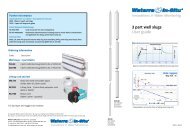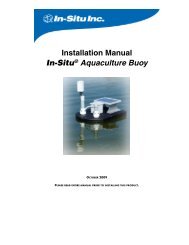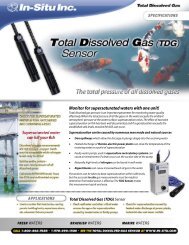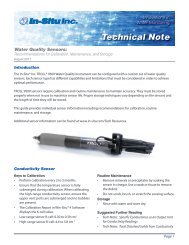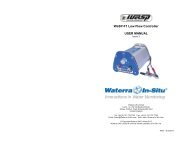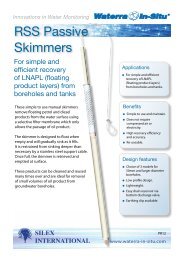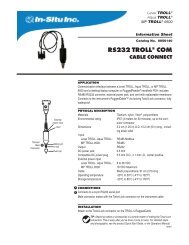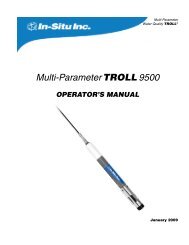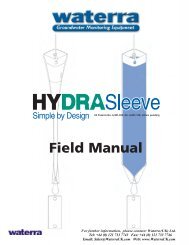TM16 - Stream Flow Meter Manual - Waterra-In-Situ
TM16 - Stream Flow Meter Manual - Waterra-In-Situ
TM16 - Stream Flow Meter Manual - Waterra-In-Situ
- No tags were found...
You also want an ePaper? Increase the reach of your titles
YUMPU automatically turns print PDFs into web optimized ePapers that Google loves.
The stream cross-section must be surveyed as meticulously as for the calculation of discharge<br />
and readings are collected systematically in a transect across the stream channel. <strong>In</strong>stead of<br />
taking just one velocity reading 0.6 of the depth, a number of readings are taken at regular points<br />
within the water column.<br />
Figure 14<br />
Data collection grid for Isovel and Choropleth Construction<br />
<strong>In</strong> Figure 14, the “+” signs indicate the midpoint of each “cell” in the grid. Typically a grid<br />
would consist of cells 0.25 m wide and 0.125 m deep. The size is determined by the size and<br />
scale of the channel and degree of accuracy required.<br />
Table 2<br />
<strong>Stream</strong> Velocity Data collected in Cells<br />
<strong>Stream</strong> Velocity in m/s<br />
Depth Col.1 Col.2 Col.3 Col.4 Col.5 Col.6 Col.7 Col.8<br />
to 0.125 0.00 0.06 0.12 0.11 0.07 0.05 0.05 0.00<br />
to 0.25 0.00 0.09 0.17 0.10 0.10 0.05 0.06<br />
to 0.375 0.05 0.11 0.16 0.10 0.10 0.10 0.04<br />
to 0.5 0.00 0.09 0.12 0.09 0.08 0.04<br />
to 0.625 0.06 0.07 0.06 0.06<br />
Cells are 0.25 wide and 1.25m deep<br />
The data shown in this grid are ideally suited to constructing choropleths. For a representative<br />
and refined Isovel construction, at least twice as many velocity readings would be required<br />
(typically in a grid with 0.1 by 0.1 m cells).<br />
Geopacks publishes a computer software package called “River Channel Analysis” which not<br />
only plots choropleths from fieldwork data but also draws channel cross-sections and calculates<br />
discharge among a wide range of other functions. For details see Appendix III.<br />
20



